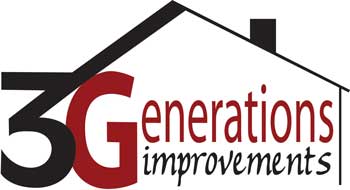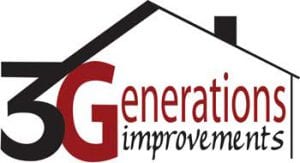For the last 3-4 years I have done a water bucket challenge with my 3 kids with different siding materials. We simply placed some different siding types in a half full bucket and waited, and waited for the results. Well, in the last 4 years California went through a severe drought into a very wet winter, so the bucket has been very dry, to very wet over the last 4 years. I guess you could say it simulated a summer vs winter on your home. Below are the 3 videos in chronological order starting in 2014. Now, before clicking on the videos I must warn you, these are iPhone videos and the best part (as with most videos) are the kids and we will always shoot in 1 take! Also, I keep having to move the bucket around different parts of my small backyard to hide it from my clean wife! 🙂
Please note, if your home is constantly soaked in water in the winter, especially on the back side of your siding, you have a flashing issue, not a siding issue! Here are some of my findings so far:
- James Hardie Fiber Cement siding – you will never have an issue with your Hardie siding rotting like your neighbors hardboard sided house. If you can ever poke your finger through your Hardie siding you have an easy warranty claim on your hands. After soaking this siding in water for 4 years, there has been absolutely zero decay. Because fiber cement is a cement based product, it will always contain a certain % of water, this percentage will depend on the humidity and overall water content from the outside of your house. That is why you will see the water absorb into the siding, even beyond the water line. Is this a concern for the average home in the US, no, but if you live in snow country yes. With water being inside the panel this can negatively impact the freeze-thaw performance of the siding and can cause brittleness. I would not install Fiber Cement where snow pack exists, rather install wood, metal or stone in these areas to avoid future repairs!
- LP SmartSide siding – the same is true for LP SmartSide products, no wood decay should ever happen. The biggest misnomer about the SmartSide products is that it is just like OSB. The only similarity to OSB is that they are both made from strands of logs, that is it. SmartSide products are treated with marine grade resins and zinc borate to eliminate water absorption and bug infestation problems. This treatment is not just the edges, it is every single strand – it is even rated to be installed back side up if that is the look you are going for! After soaking this siding in water for 4 years, there has been absolutely zero decay as well. Different than fiber cement products, LP is considered a dry product, so it wants to avoid water absorption. For this reason, you will not see absorption above the water line and the % of water content in LP is dramatically lower than fiber cement. You would not be able to visibly see a performance difference in most homes, except for in snow country or high humidity climates. If you live in these areas, think through your building material choices carefully to avoid re-siding your home twice!
- Alside Insulated Prodigy siding – vinyl itself performs extremely well in most climates in the United States. It expands and contracts as the climate dictates. Also, it sheds water really well if you have a box home with no window or doors. Vinyl, or polymer products really struggle with water penetration around windows and doors, especially for two story homes. Where LP & Hardie siding projects are installed more like roofs on your side walls (using Z-bar and slip sheet flashing), vinyl still uses channeling systems that are not designed to keep all water out. Thus, you will rely on the house wrap and flashing more than the other two products. For those of you who installed this product on your home, don’t panic, because as you will see in the below three videos, water is not the enemy of vinyl siding and very little deterioration will occur. If you decide to go this route, make sure your contractor wraps and flashes really well under the siding and think twice before installing it in snow-pack as it too becomes brittle.
- Raw Cedar siding – raw wood materials are becoming harder to find and more expensive. The composite market has exploded in the last 10-20 years as technology has improved performance and brought peace of mind to homeowners in the form of warranty’s! Cedar siding will be more expensive to install after paint or stain is applied and the maintenance costs of this product are very high. The great news about cedar is that it naturally performs very well in exterior applications at not only shedding water, but keeping the pests out – all pests except woodpeckers! If you live in woodpecker country, be careful with this product as woodpeckers come back to the same home every year, generation after generation! You will see in the challenge below that cedar performs as well as the LP and Hardie and it will last decades on your home as long as it is maintained well with stain or paint.
- OSB Sheathing – OSB is typically only treated on its edges, which allows for rapid water absorption on its sides. However, if the home is flashed and wrapped correctly very little water should be touching the OSB, so the whole plywood vs OSB debate doesn’t make a whole lot of sense for most homes. Again, see above for snow and humid climates – you guys get to spend extra money! In the first 4 years of the water bucket challenge the OSB is the only product showing dramatic deterioration, but again, if your home is submerged in water you have bigger problems, like your home might be floating down the river!

